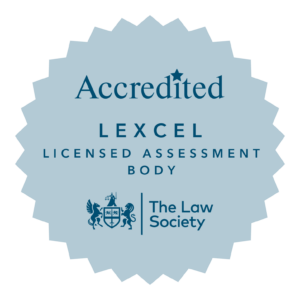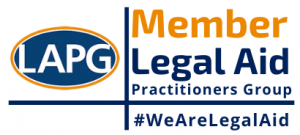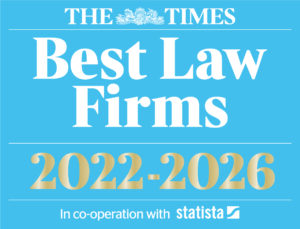The original proceedings concerned an application under the Hague Convention on the Civil Aspects of International Child Abduction by the Father for return of his 13 year old daughter “KP” to Malta, following her being brought to the UK by her Mother without her father’s knowledge. Those proceedings concluded with an Order for the child’s return to Malta.
An application was subsequently issued by the Mother to appeal that decision principally on the basis that the Judge at first instance had conducted a meeting with the child which contravened the Guidelines for Judges Meeting Children who are Subject to Family Proceedings (April 2010) and had used information obtained during that meeting in reaching her decision to order a return.
During the final hearing, Parker J had heard evidence from the Cafcass Officer that KP felt unheard and that it would be really helpful for the Judge to meet with her. KP was therefore brought from school to meet with the Judge later that day in the presence of the Cafcass Officer. A transcript of the meeting was obtained.
In her Judgment, Parker J set out that it was her intention to meet with KP to (i) tell her that she was conducting a limited evaluation in accordance with an international agreement; and (ii) see her in accordance with the Guidelines for Judges Meeting Children who are Subject to Family Proceedings.
The Appeal Judgment sets out in full the Guidelines, which were issued by the Family Justice Council and Sir Nicholas Wall, the then President of the Family Division in April 2010. The appeal judgment can be found here.
On behalf of the Appellant Mother, submissions were made about the need to draw a line between allowing the child to express his or her wishes and feelings and the court setting about a process of investigation of those stated wishes and feelings, for example to analyse the rationality of the child’s view.
The appeal was supported by the child, who had been made a party to the proceedings. The Court heard that K had found the meeting with Parker J to be “intimidating”. The transcript of the meeting between the Judge and K showed that the Judge asked K some 87 questions during the course of over an hour.
Mr Williams QC, instructed by Creighton & Partners to represent the Respondent Father, submitted that the Guidelines permit a judge to take account of what is said during a meeting with a child and that the Judge was entitled to evaluate K’s objection to a return in the light of what she had heard during their meeting.
Mr Williams asked the court to consider a situation where a judge asks the child if he or she wishes to say anything and the child then goes on to add to, clarify or otherwise alter the wishes and feelings previously expressed to the CAFCASS officer. Although a judge’s meeting with a child should not be for the purpose of gathering evidence, the process of “hearing the child” might involve receiving additional evidence.
In reaching their decision, the Appeal Court Justices acknowledged that Courts in this jurisdiction are “still feeling their way forward in order to determine how best to ‘hear’ the voice of a child who is the subject of an application under the Hague Convention”. They made clear that nothing in this judgment should be taken as any more than a description of the approach currently endorsed by judicial authority to hearing the voice of a child in such cases.
At paragraph 53, the Justices set out a very useful list of “themes” common to the authorities on judicial meetings with children referred to in the Judgment:
“(a) There is a presumption that a child will be heard during Hague Convention proceedings, unless this appears inappropriate (Re D)
(b) In this context, ‘hearing’ the child involves listening to the child’s point of view and hearing what they have to say (Re D, para 57; JPC v SLW and SMW (Abduction) [2007] 2 FLR 900, para 47)
(c) The means of conveying a child’s views to the court must be independent of the abducting parent (Re D, para 59)
(d) There are three possible channels through which a child may be heard (Re D, para 60):
i) Report by a CAFCASS officer or other professionals;
ii) Face to face interview with the judge;
iii) Child being afforded full party status with legal representation
(e) In most cases an interview with the child by a specialist CAFCASS officer will suffice, but in other cases, especially where the child has asked to see the judge, it may also be necessary for the judge to meet the child. In only a few cases will legal representation be necessary (Re D, para 60)
(f) Where a meeting takes place it is an opportunity (JPC v SLW, para 47; Re J (Abduction: Children’s Objections) [2011] EWCA Civ 1448, [2012] 1 FLR 457, paras 31 to 40):
i) for the judge to hear what the child may wish to say; and
ii) for the child to hear the judge explain the nature of the
process and, in particular, why, despite hearing what the child may say, the court’s order may direct a different outcome;
(g) a meeting between judge and child may be appropriate when the child is asking to meet the judge, but there will also be cases where the judge of his or her own motion should attempt to engage the child in the process (Re J, para 31).
“None of the reported cases goes further than the guidelines by suggesting that a judicial meeting might be used for the purpose of obtaining evidence from the child or going beyond the important task of simply hearing from the child that which she may wish to volunteer to the judge.”
Allowing the appeal, the Justices concluded that Parker J’s meeting with K had fallen “on the wrong side of the line”, for the following reasons [para 56]:
“i) During that part of any meeting between a young person and a judge in which the judge is listening to the child’s point of view and hearing what they have to say, the judge’s role should be largely that of a “passive recipient of whatever communication the young person wishes to transmit.
ii) The purpose of the meeting is not to obtain evidence and the judge should not, therefore, probe or seek to test whatever it is that the child wishes to say. The meeting is primarily for the benefit of the child, rather than for the benefit of the forensic process by providing additional evidence to the judge. As the Guidelines state, the task of gathering evidence is for the specialist CAFCASS officers who have, as Mr Gupta submits, developed an expertise in this field.
iii) A meeting, such as in the present case, taking place prior to the judge deciding upon the central issues should be for the dual purposes of allowing the judge to hear what the young person may wish to volunteer and for the young person to hear the judge explain the nature of the court process. Whilst not wishing to be prescriptive, and whilst acknowledging that the encounter will proceed at the pace of the child, which will vary from case to case, it is difficult to envisage circumstances in which such a meeting would last for more than 20 minutes or so.
iv) If the child volunteers evidence that would or might be relevant to the outcome of the proceedings, the judge should report back to the parties and determine whether, and if so how, that evidence should be adduced.
v) The process adopted by the judge in the present case, in which she sought to ‘probe’ K’s wishes and feelings, and did so over the course of more than an hour by asking some 87 questions went well beyond the passive role that we have described and, despite the judge’s careful self-direction, strayed significantly over the line and into the process of gathering evidence (upon which the judge then relied in coming to her decision).
vi) In the same manner, the judge was in error in regarding the meeting as being an opportunity for K to make representations or submissions to the judge. The purpose of any judicial meeting is not for the young person to argue their case, it is imply, but importantly, to provide an opportunity for the young person to state whatever it is that they wish to state directly to the judge who is going to decide an important issue in their lives.”
The Justices concluded that the information obtained from Parker J’s meeting with K went to the heart of her analysis and her decision to order K’s return to Malta. The Justices found that, while what K said to the CAFCASS officer and the judge was in similar terms, the difference between the two processes is that during the judicial interview the judge sought to probe and to tease out what reasons there were behind K’s stated views. “In this manner we consider that the conduct and the content of the interview achieved a pivotal status in the judge’s evaluation of the case…The judicial interview provided key evidence upon which the judge relied in coming to her conclusion.”
The order for the return of K to Malta was therefore set aside and the matter remitted to the High Court for re-trial.
Jacqui Cox


